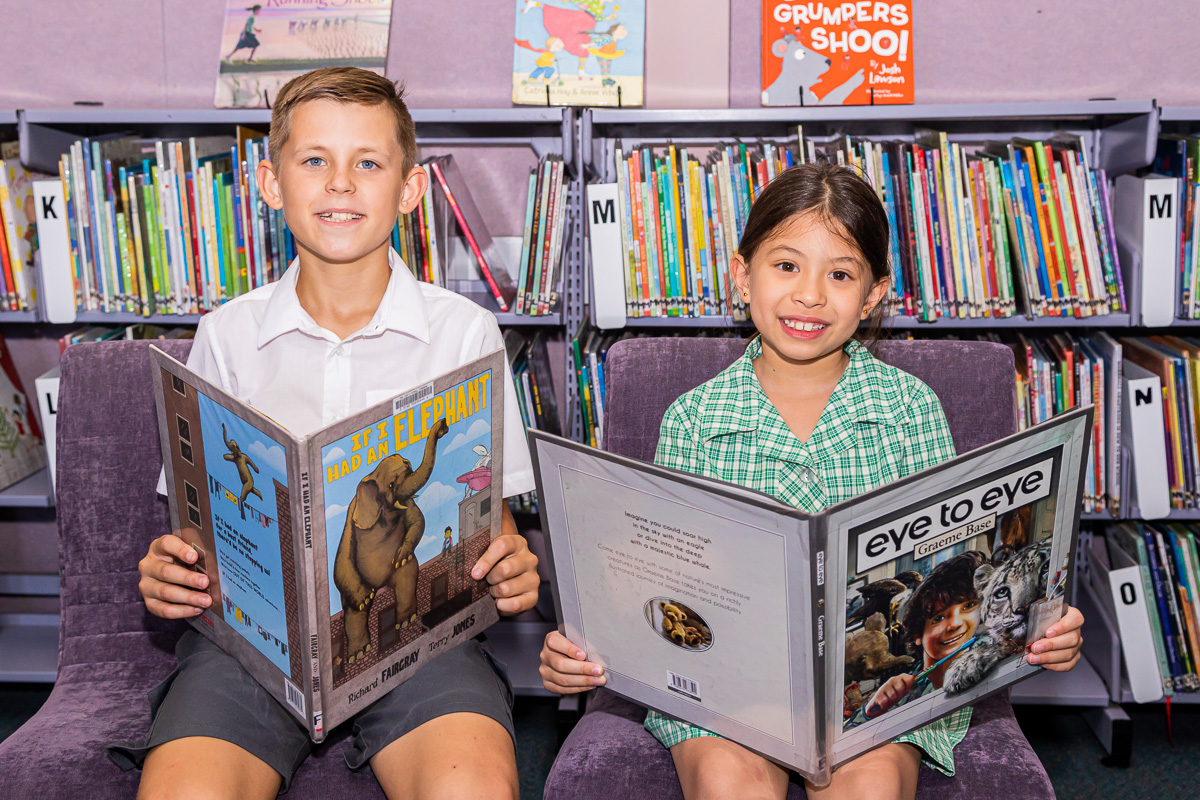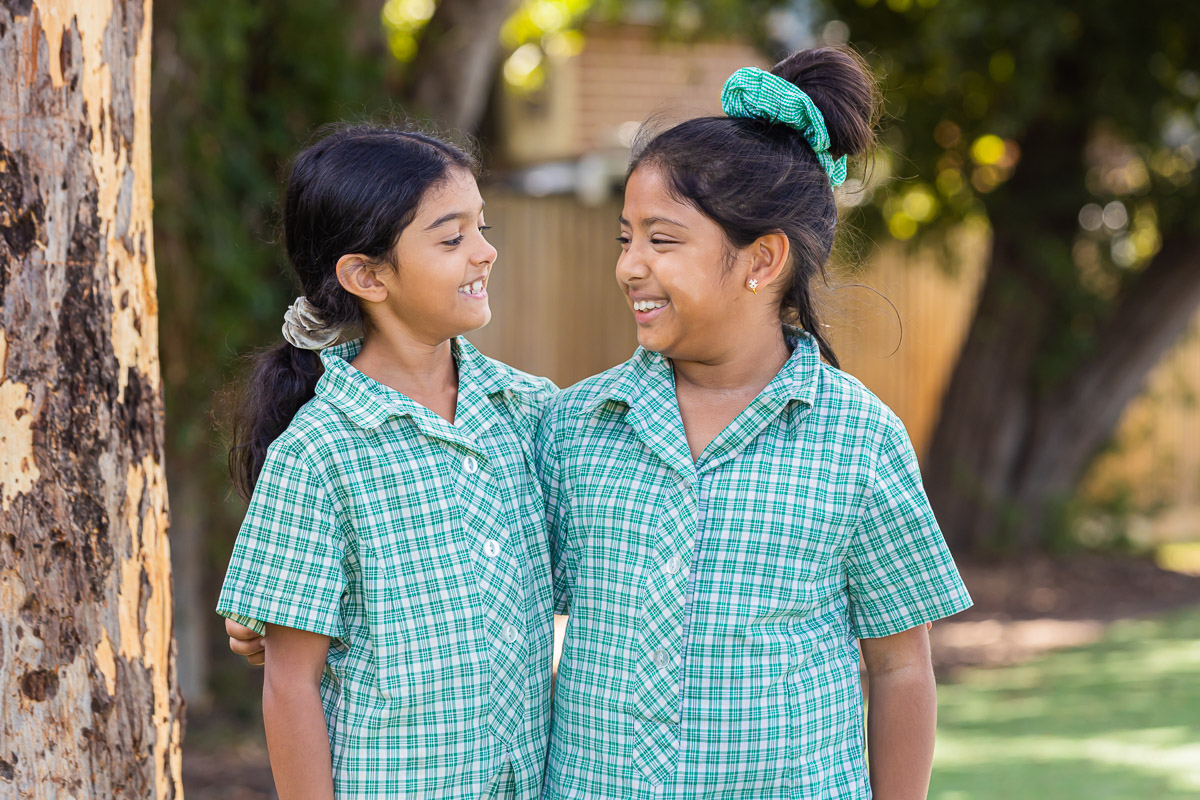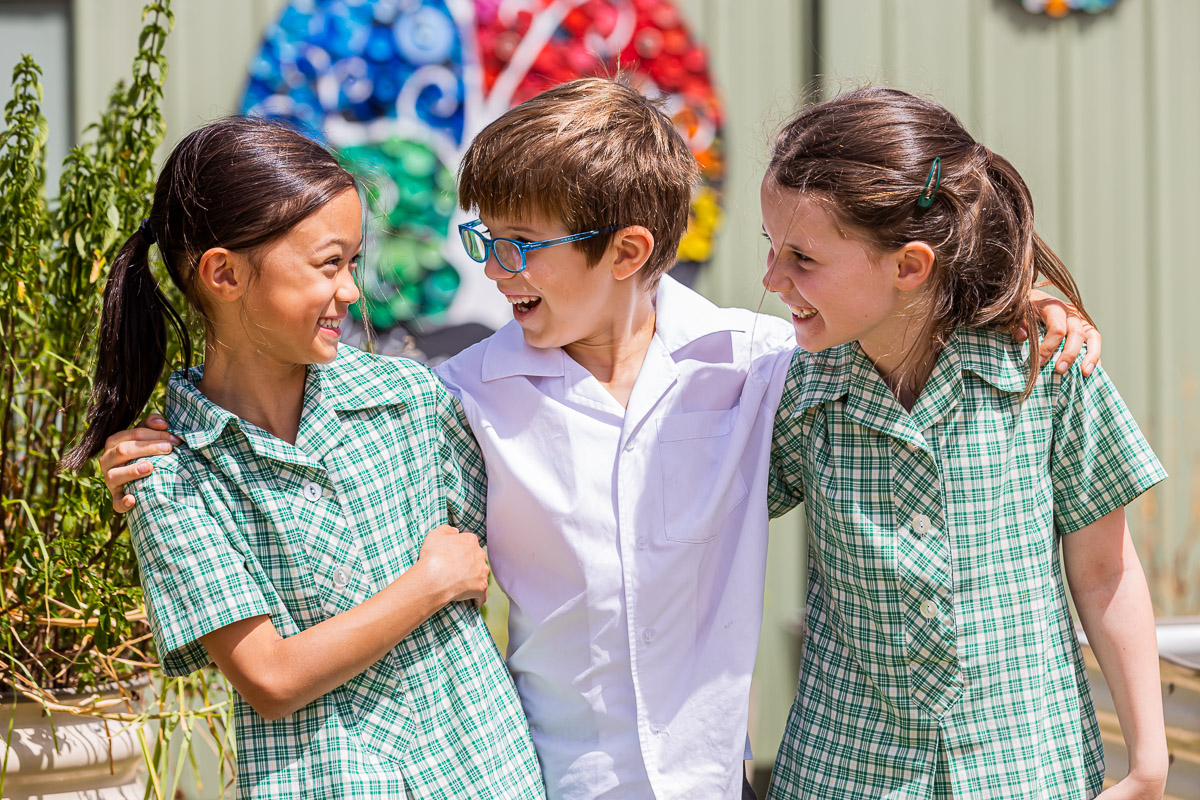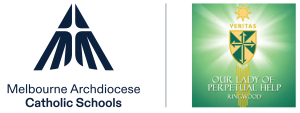School History
The story of a parish school must begin with the story of a parish.
On 6 October 1920 the Diocesan Consultors – a number of priests who act as official advisers of the bishop in certain matters pertaining to the administration of the diocese- took a momentous decision to create a new parish out of the very large St Patrick’s parish of Lilydale. The Lilydale parish, which had been created in 1889, in those days extended up to Middleborough Road, Box Hill! However, there had been a considerable growth in the Catholic population of Croydon, Ringwood and Mitcham and the Consultors decided it was time that those Catholics had a parish of their own. Accordingly, the Consultors decided to divide St. Patrick’s parish. They established the Parish of Ringwood. The new parish would include all of the district from Middleborough Road, Box Hill to Manchester Road, Mooroolbark. The Consultors made three clerical appointments that October day — Father Patrick Gleeson was made parish priest of Kilmore; Father Michael Quinn was made parish priest of West Brunswick: and Father Michael Finan was made parish priest of the new parish of Our Lady of Perpetual Succour, Ringwood. Our first parish priest!
Father Michael Finan arrived in the district on Saturday, 11th November. He celebrated the first Mass as parish priest in a little wooden church; St Joseph’s, in Whitehorse Road built on land donated by the Pratt family and built for £145, on Sunday, 7th November, 1920 (the first Sunday of November). The Saturday after his arrival, Mr. and Mrs. John O’Connell, who were visiting Victoria from Lockhart in New South Wales, called on Father Finan and had their six-week old baby, Lawrence Joseph, baptised; it was the first baptism in the new parish. On Sunday, 12th December 1920, Father Finan baptised his first convert and his first local resident. The Catholic people of Ringwood were no longer dependent upon visiting priests for their sacraments. In 1923 Father John Keown followed Father Finan as parish priest.
Father John Donovan arrived in the parish in 1926. It was Father Donovan who organised the laying of a foundation stone for a brick church-school on land which had been purchased in Bedford Road-Wilana Street. The stone was blessed by Archbishop Daniel Mannix in 1929. The architect of the building was a Mr. A. A. Fritsch. In 1931 Father Hughes came to the parish. He found it impossible to obtain teachers for the school. He had the little wooden church moved from Whitehorse Road to the Wilana Street site. The next year the Mercy Sisters at Lilydale agreed to staff the new Ringwood school. St Mary’s School, Ringwood, was opened on 25th January, 1932. Sister Mary Xavier McEvoy was the first Principal and Sister Mary Beatrice Richmond was her assistant. They traveled daily from their Convent in Lilydale. Seventy-five pupils were enrolled that day. Enrolment was greater than anticipated. Therefore, it became necessary to convert the old wooden church into a classroom. The building was a church-school with folding doors separating the two class-rooms. Sister M. Beatrice taught in this room for most of her twenty-four years at St. Mary’s. Folding doors also separated the senior room from the sanctuary. The doors were opened at lunchtime so that the children could make a visit to the Blessed Sacrament. A Mr. Casey of Warrandyte did the necessary alterations to make the building acceptable to the Education Department for use as a schoolroom.
Until the school at Mitcham was opened in 1957, children came to St. Mary’s from Mitcham, Vermont, Ferntree Gully, Bayswater, Croydon, Heathmont, Ringwood East, North Ringwood and Warrandyte. Mothers of children in outlying districts provided transport to and from the school. Mrs. Mackey brought a group of children in her old car from Mitcham. Mrs. Casey brought the children from Warrandyte in a jinker (a two- wheeled sulky or horse drawn carriage). The journey by jinker took two hours in the morning and two hours in the afternoon. When the number of children increased she procured a larger carriage. Later bus transport was organised for the Warrandyte children. The McGrath family travelled in a horse-drawn vehicle. The horse was tethered to a tree in the school yard during school hours!
In 1933 Sister Marie Therese Hoban took the place of the lay teacher. Sister Xavier remained at the school until 1937. Sister M. de Sales Hayes replaced Sister Marie Therese in that year. Sister Beatrice remained at the school until 1958, an incredible 26 years. In all that time there was only a two-year period when Sister Beatrice was not at Ringwood, when she was teaching at St. Patrick’s, Lilydale for two years. In 1939 Sister M Sebastian came from Geelong and took charge of the school for that year. In 1949 Sister Mary de Sales returned to St Mary’s, where she remained until 1954. In 1955 the name of the school was changed from St. Mary’s to Our Lady’s as Our Lady of Perpetual Succour is the patroness of the parish. Also in 1955 Sister M Hildergarde Fitzpatrick replaced Sister Mary de Sales and in 1957 Sister Benigna Butler replaced Sister M Hildergarde. In 1958 Sister M Dunstan replaced Sister Benigna Butler, with Sister M Evangelist Quinn and Sister Marie Therese Fox as her assistants. The Sisters travelled by train from Lilydale. On one occasion when the creek which flows through the centre of Lilydale was in flood, the Sisters were taken through the flood water from the railway station to the car which was awaiting them on the other side of the creek. The lay teachers who taught over the years at St. Mary’s were Miss Helm, Miss McCoy, Mrs. Beaumont, Mrs. Beatty, Mrs. Flynn, Miss Kerr and Miss Alexander.
There was a large influx of native-born Australians and new migrants to Ringwood in 1950. As a result, Father O’Toole had to build new brick classrooms and a nuns’ room (a staff room?) to ease the overcrowding in the church-school and St Joseph’s. In 1956 five new class-rooms were built at the end of the playground opposite the church-school. While these were being built, Sister Mary Rosaria taught in a tennis pavilion with a class of eighty-five children climbing over desks to get into their places. Sister used to walk in back wards Sister M. Hildergarde sometimes taught her children in the priest’s garage. This new building was opened in 1954 and enabled the remodelling and redecorating of the church-school so that it might be used as a church only. The old house that had served as the Presbytery on the corner of Bedford Road and Wilana Street was demolished after a new brick Presbytery was built in Bedford Road In 1953. In 1956 Father O’Toole was planning to build a shelter shed at the school, but was transferred by the Archbishop before he could carry out his plans. His successor, Father J. W. Scarborough oversaw the completion of a covered way to the five new classrooms.
There was more going on than construction, though. Each year the Feast of Christ the King was always First Communion Day. Each year sports were held in the first term, a ball in the second tern, and a concert in the third term. A Mrs. West travelled from Yea each week to help with the preparation for these events.
St. Mary’s Parents and Friends Association was formed in 1932 with only seven members. At the time Our Lady’s was handed over to the Dominican Sisters in 1960, this Association numbered one hundred and ten members. The Association did much to supply the needs of the school and staff. At the end of each year a delicious lunch was provided for the staff and each member was presented with a beautiful bunch of flowers and a gift. The cupboard in the nuns’ room was kept supplied with tempting food items for lunch.
It is useful at this stage to say something about the financing of Catholic parochial education at this time. Parishioners used to the perennial debate about the funding of Catholic schools by the state government might be surprised to learn that it was the parish priest and people who maintained every parish school in those days. A plenary council of Bishops in 1937 decreed that parochial schools would be financed out of the ordinary revenues of the parish. The usual method was by ‘school money’ collected each week from pupils. It varied according to the financial circumstances of families — 6 pence, 9 pence, or even 1 shilling. (Ask your grandparents how much that was in terms of dollars). Frequently, even this small contribution could not be met, and the parish undertook to make up by other means what was lacking for teachers’ salaries. One of the nuns recalled that during the Depression in the 1930s the children were not asked to buy books, but she suggested that they buy a monthly school paper, priced at one penny, which provided material for a variety of lessons — reading, spelling, dictation, poetry, composition. A note arrived from a father protesting that when a man had to provide shoes, bread and so on for a growing family, even one penny was a considerable amount. After that the nuns visited the family and helped them financially as far as they were able. The nuns took much of the burden of parochial schools on themselves. Their material needs were scanty, and the payment they received corresponded. In one parish the nuns were paid a stipend of £50 a year for many years. These pious women had taken vows of poverty. It was perhaps just as well that they had; for the parishes could only maintain them in frugal simplicity, providing basic food and simple clothing. They taught large and often composite classes during school hours and music before and after that. The principal took the highest grades in the school, to Merit Certificate, while administering the school single-handed. There was no office support-staff. The teacher-pupil ratio was far higher in parochial schools than in the comparable state schools — their classes (if indeed they had a single class) seldom numbered less than fifty. The situation at Our Lady’s would have been no different.
In 1957 Fr. Scarborough took Fr. O’Toole’s place as parish priest. That year a two-storey building was erected containing three additional classrooms with a hall, a tuck shop and toilet block downstairs. This building was blessed and opened by Bishop Fox. However, the hall did not stay a hall for very long. The continual increase in the Catholic population in the Ringwood area, with the resultant increase in Catholic children seeking a Catholic education, meant that the hall was soon turned into two additional classrooms. Father Scarborough was parish priest during the momentous years of the 60’s. l960 saw the opening at 10 Bedford Road of a convent for the Dominican Sisters. The arrival of the Dominican Sisters from Adelaide meant that the Sisters of Mercy were relieved of the burden of traveling to and from our local school. It was in the same year that Ringwood received its first curate. This was Father M. Kelleher. Father remained with the parish for five years. A new church-hall was completed and opened by Bishop Fox in the following year.
February 1961 also marked the commencement of Aquinas College for boys. Aquinas was the first regional Catholic High School in Victoria. Only boys from the parishes financing and maintaining the college, that is Healesville, Lilydale, Croydon, Ringwood and Mitcham, had the right to attend the college. Situated on 30 acres of land in Thomas Street, the college was placed under the direction of the Christian Brothers who catered for Forms 1 and 2 at its opening. Five acres of land were later purchased in North Ringwood near the corner of Warrandyte and Oban Roads to cater for the fast-growing population in that area. 1964 saw considerable extensions to Aquinas College. These included a residence for the Christian Brothers, a science block and additional classrooms, which were also blessed by Bishop Fox. With the arrival of a third priest, Father Morgan, in 1965, it became necessary to extend the Presbytery. In 1966 Father Scarborough was transferred to St Ambrose Parish in Brunswick. Father Randall, who came from Mornington, took his place as parish priest. Father Randall joined with the neighbouring parish priests in the building of the first stage of Aquinas Girls’ College. Beginning in 1967, the girls’ college had grown to include Form 4 by 1970. In October 1969 Father Randall was transferred to the parish of Ascot Vale and Father Rankin to the parish of Mordialloc. In their places, the Archbishop appointed Father O’Shea as parish priest and Father O’Connor as assistant parish priest. Father M. Leahy joined the staff shortly after.
Margaret Confoy, a teacher at Our Lady’s from 1968 to 1980 and Principal from 1982 to 1994, remembers that in 1962 Sister Bernard, a Dominican nun, had a small office with indoor steps leading gown to a Grade 6 which she taught, as well as being principal with approximately 800 students! At that time Prep was held in the original old wooden church building which was located between the present church and the hall. The only other buildings at that time were the present two storey building, five classrooms without the veranda, a very small staffroom (which later became the secretary’s office and then a sick room). There was one toilet there for all the staff. Such was the overcrowding, that the following year a decision was made to send all Prep students to the state school. A bit later, a small school/church was opened at East Ringwood with one Dominican nun and later a few lay teachers. Students attended there until they completed Grade 4 and then came to Our Lady’s for Grades 5 and 6.
Margaret began teaching Grade 4 at Our Lady’s in 1968. She was given the middle classroom in the block of five. There were 53 children in the class! Their desks just fitted into the room. Conditions were very different to those in the state schools where she had previously trained and taught. As there was little financial help from the government, teacher’s salaries were minimal. Margaret and the other teachers spent their own money to buy “extras’ for their classrooms – eg. handwork and art materials, books and coloured chalk. At one stage she even had to pay for a new lock on her classroom door. The teachers were also responsible for cleaning their own classrooms, with the help of the children. She remembers that at this time there was very little contact between teachers and parents. At best there were parent/teacher interviews, probably once each year and the written reports. However, the parents’ help was greatly appreciated with sport, fundraising, the tuck shop and excursions. The relationships were always formal: teachers were addressed as Mrs. or Miss; Christian names were not used. The teachers were provided with some in-service sessions but there were no “child free” curriculum days. Occasionally, there was a break from the routine. Margaret remembers travelling to Adelaide with some nuns during one holiday period to look at open classrooms. .Grade 2 became the first open classroom and when the double room arrived a joint Prep/Grade1 opened there and the “Prep’s” were welcomed back. At one time the church crying room was a Grade 1 classroom.
On 13th November 1977 His Grace, Archbishop Sir Francis Little officially welcomed the Spiritan Fathers to Ringwood. Father Hugh Fagan was parish priest with Father Con Peelo as his Assistant. In April 1980, Father Cogan became parish priest for nine years, with Father Chamberlain as his Assistant. From its modest beginnings, Our Lady’s had nuns as Principals. However, with the departure of all but one of the Dominican sisters at the end of 1981, the first lay Principal, Mr. Lindsay Castree, was appointed to lead the school. At the end of that year, Margaret Confoy began her time as Principal. One of the Dominicans, Sister Cecelia stayed on at the school to teach Music for some years.
Margaret Roper remembers that at the time there was a Prep Unit, five classrooms along the current Grade 5/6 wing, three classrooms upstairs, a classroom at the end of the current library, a very small library, next to it, a pottery room and a staff room where the current library workroom is. An entry between the toilets led to a small room for the Religious Education Co-ordinator. Two small offices housed the Principal and the Secretary. There were no verandas, so there was little protection from the elements. The playground had large pipes and other objects to climb on, but these were removed in subsequent years, as were several trees which had previously been a part of the convent gardens.
By the mid-1980s some major construction work became necessary. Two of the classrooms were converted to a staff room and an Administration area. To house the students from those rooms, two portable rooms were used while new classrooms were built in the middle of the playground. The new rooms were opened at the beginning of 1987. Simultaneously, the three remaining rooms were remodelled, with ‘wet areas’ erected outside, providing more space for varied activities. The library was then extended to its current size, the entry between the toilets was closed off, so that an extra storage area could be utilised.
Father Cogan officiated at the opening of our refurbished church on 4th March 1990. Father Peelo returned to the Parish after an absence of some time. Father Thomas Crean arrived in 1989 as parish priest. In 1993 the people of Ringwood mourned the death of Father Con Peelo in Ireland. Father Michael Daly then replaced him as assistant to Father Crean. In 1997 Father Pritchard became parish priest.
Margaret Confoy retired at the end of 1994 and Bernadette Hubbard became Principal. Margaret was Principal of Our Lady’s school from 1995 to 2004. She instigated and oversaw significant change, to the physical aspects of the school. The first project was the renovation of the toilets. This was followed by the installation of the veranda along the Grade 5/6 area and later an extension of the veranda to the Prep Unit. There were major changes to the administration block and the library, two new classrooms were built and major renovations were made to other classrooms. The front entrance to the school was improved and the foyer of the school took on a much more professional and welcoming appearance. Because the Prep Unit was ‘showing its age’, Bernadette organised the building of the current Prep and Prep/One rooms; which, along with the new Administration area, were opened in 2001. The canteen was renovated to provide for more efficient use. The library was upgraded in 2003, as were the upstairs classrooms. These were the first rooms to have air conditioning, a welcome innovation.
There were also major changes to the curriculum. The introduction of Curriculum Statement Frameworks 1 & 2 provided many challenges but also determined the educational direction for the future. It provided many opportunities for professional growth and learning and encouraged partnership and teamwork amongst the teachers. It also necessitated the revision of policies and programs. The school community worked very hard for the benefit of the students and during this ten year period provided many resources for the school. The annual Fete took a new direction and contributed financially and socially to the school. The staff of the school always kept in mind the needs of the students and worked tirelessly to provide a solid education for the students. Many students went on to excel at secondary school. The students were excellent representatives of the school and were friendly and welcoming to all in the community.
From 1997 until 2004, when he was transferred out, Father Pritchard provided wonderful support to the school staff, students, families and Margaret, as he too worked to ensure that Our Lady’s parish and school remained vibrant and connected to each other.
I would like to acknowledge my debt to all those who have written about the history of Our Lady’s school before me. In particular, I would like to acknowledge the publication “The Labourer’s Friend” by Sister Maree Allen for the material on the financing of parish schools and the recollections of Margaret Confoy, Bernadette Hubbard and Margaret Roper, from which I have quoted liberally.
Brian Du Bois

Online Tour
The best way to start learning about us. We have professionally produced dozens of videos showcasing our amazing school.

Book a School Tour
The best way to meet us! We can show you around our beautiful school and answer any specific questions you have.

Upschool
This free and growing resource is our way of sharing positive and inspiring messages with our community.

![]()
Website, graphic design, videos & photography by Digital Schools | www.digitalschools.com.au | Copyright Digital Schools. All Rights Reserved

